There are 70 different species of sunflowers around the world, with dozens, if not hundreds of cultivars, varieties, hybrids (i.e., types of sunflowers). They’re far from equal to each other in growing preferences, sizes, and colors, though, so you’ll want to study up on the selections before deciding to grow your own. We’ve categorized some of the most popular options to help you determine what you’re looking for. Read the minimal care instructions provided so you know what you’re getting yourself into with each.
Tall, Giant, or Mammoth Sunflowers
Most of us are probably most familiar with the giant, mammoth, or tall varieties and species of sunflowers. These are the huge ones we see along roadsides in massive fields used to make sunflower mazes and produce mass crops of seeds for commercial uses. Their solitary huge blooms droop down and shine their faces on the plants below when not properly supported.
Even among these, there are many, many varieties and a huge range of heights and sizes, colors and forms available.
Skyscraper Sunflower
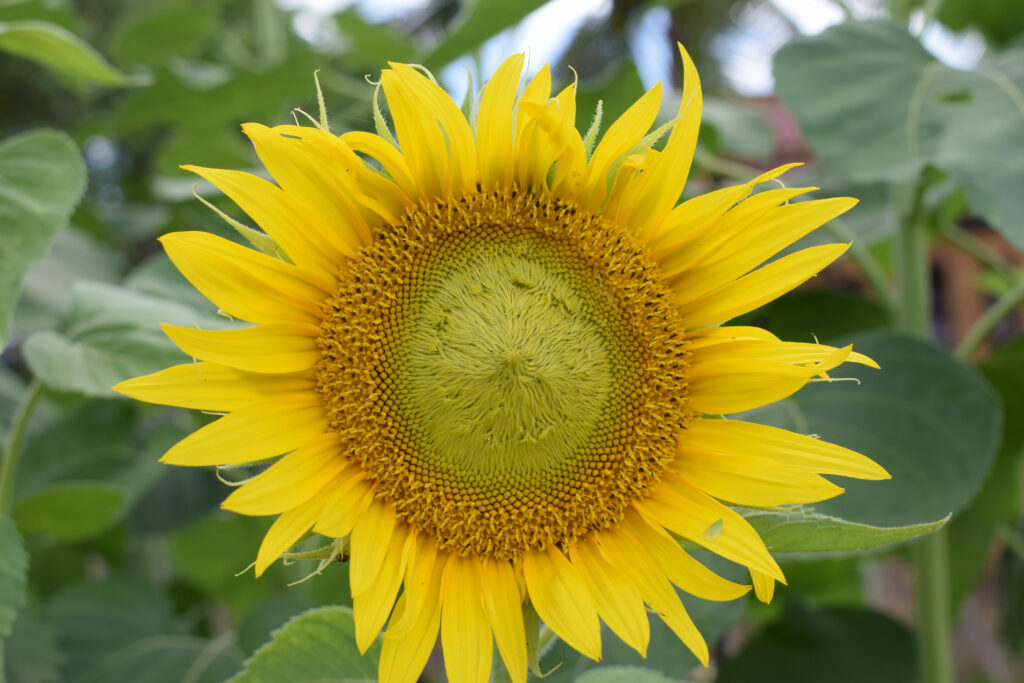
Skyscraper sunflowers are truly mammoth in size, coming in at 14-16 feet.
©SDS_Photos/Shutterstock.com
Living up to its name, the Skyscraper sunflower is one of the tallest types of sunflowers. They average 14 to 16 feet in height. These are great for folks with limited space to grow just a couple of the flowers together for a huge impact without taking up the whole garden.
Plant these beauties after all danger of frost has passed, in open, exposed ground. When the plants hit about four inches in height, thin them out. Provide them with lots of water.
Russian Mammoth
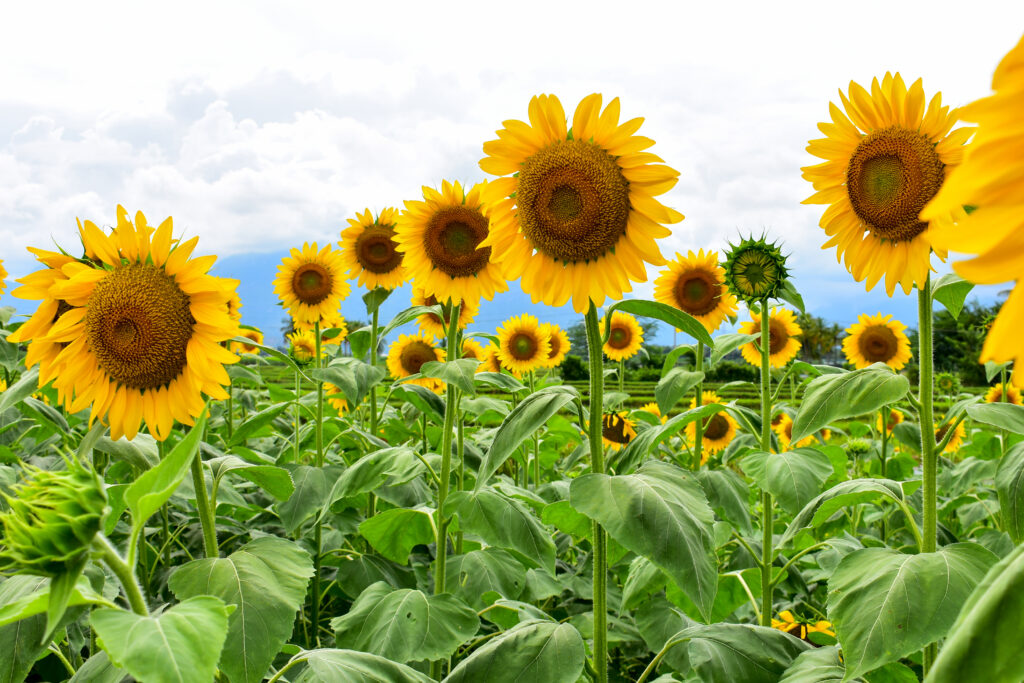
Also known as the common sunflower, Russian mammoths are some of the sunflower varieties with which we are most familiar.
©Ganeshkumar Durai/Shutterstock.com
Known as the common sunflower or the Russian Mammoth, this giant sunflower variety is a low-maintenance beauty. This monster grows between 9 and 12 feet in height, with flowers as wide as 14 inches across. They should be planted in moderately fertile soil, in a sheltered place. The seeds should be planted 6 inches apart in the springtime after soil temperatures have reached 50 degrees and the danger of frost has passed.
Russian mammoths bloom in late summer, with bright yellow flowers and chocolate brown centers. They attract birds, bees, butterflies, and squirrels with their seeds. You can roast the seeds for human consumption, as well.
Mongolian Giant
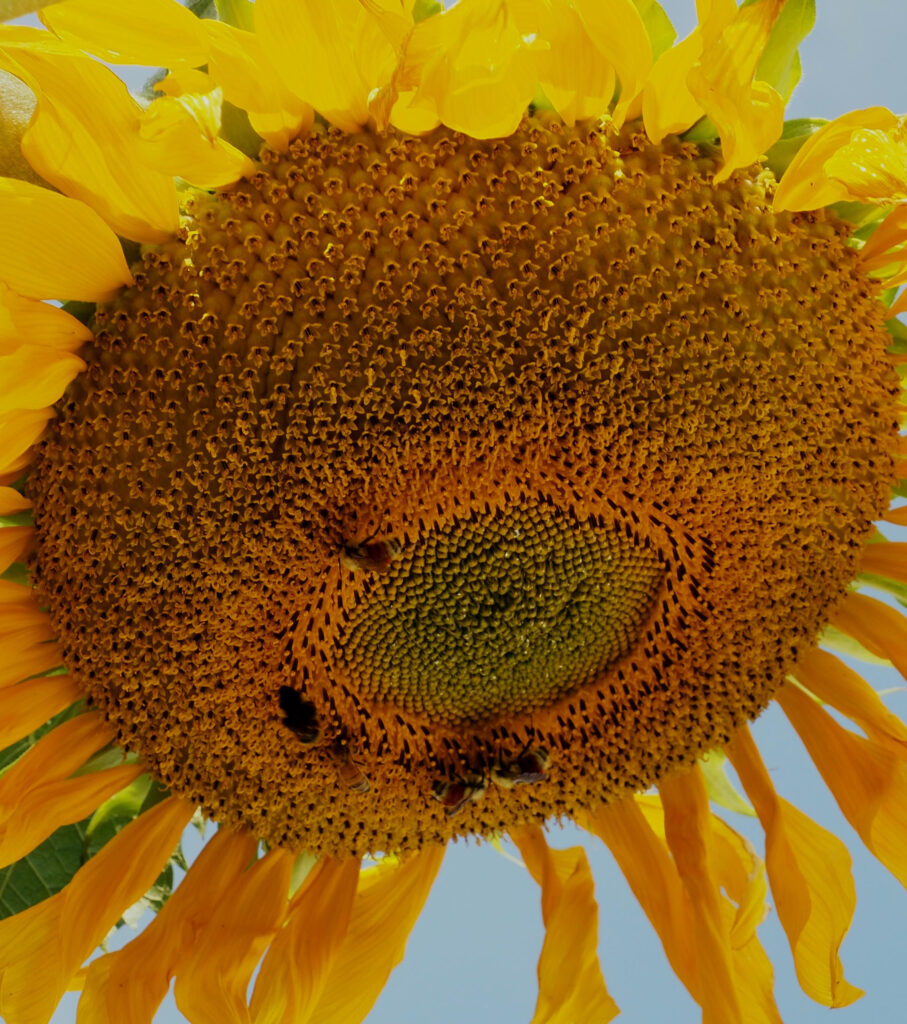
Mongolian Giant sunflower grows between 14 and 18 inches across and keeps its petals for four to six weeks.
©James Haston/Shutterstock.com
Another towering sunflower variety, the Mongolian Giant also lives up to its name and reputation. The huge plant grows as tall as 14 feet, producing a single flower per plant. The massive flower is between 14 and 18 inches across and typically takes about 90 days to bloom. The flowers last four to six weeks before losing their petals. Their huge seed heads attract birds and animals. Humans also enjoy their seeds.
Plant them in a location where they will receive full sun. They need rich, moderately moist soil, in the springtime shortly after the last frost.
American Giant Sunflower
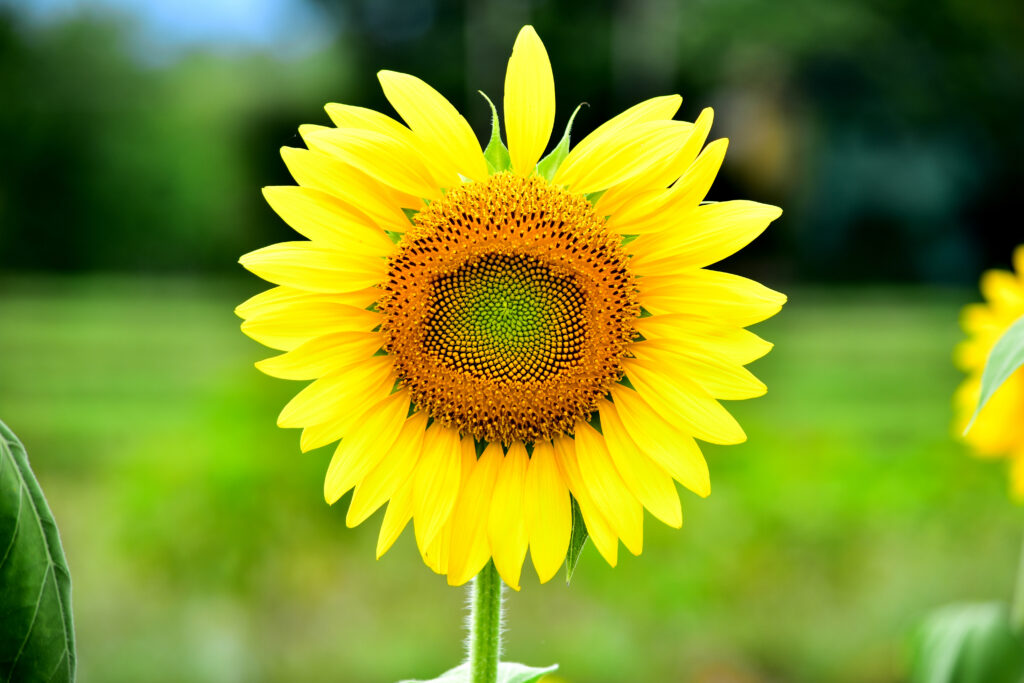
American giant sunflowers can reach 16 feet tall.
©Ganeshkumar Durai/Shutterstock.com
The American Giant Sunflower may reach up to a whopping 16 feet in height, with flowers that are up to 10 inches across. Growers enter this massive species in competitions for their height and their sturdy stems that keep the flowers upright longer than some other species and varieties. These are large-space plants, with leaves that spread quite wide. They typically take 65 to 75 days to bloom, producing those gorgeous flowers in summer.
Plant the seeds in spring, after the last threat of frost, in well-draining, nutrient-rich soil where they will receive full sun.
Giant Sungold

Giant Sungold is a fast-growing sunflower. Its flowers are between six and ten inches across.
©Aldo_Parrotta/Shutterstock.com
A fast-growing tall sunflower is the Giant Sungold. These beauties aren’t as massive in height, only growing five to six feet tall, but they still have huge flowers between six and ten inches across. The flowers are more petal-heavy than your “standard” sunflower in most pictures you find, actually looking a bit like pom poms. They are perennials that require full sun and moderately full sun. Plant them after the last threat of frost.
Dwarf Sunflowers
For those looking for all the sunflower glory without all the space – or those growing sunflowers in containers, dwarf varieties are the way to go. These rarely reach over 3 feet tall, and many only hit 3 feet in height. They often still grow large blooms but not so huge you can’t grow them as potted plants and window box plants (in some cases).
Sunny Smile Sunflower
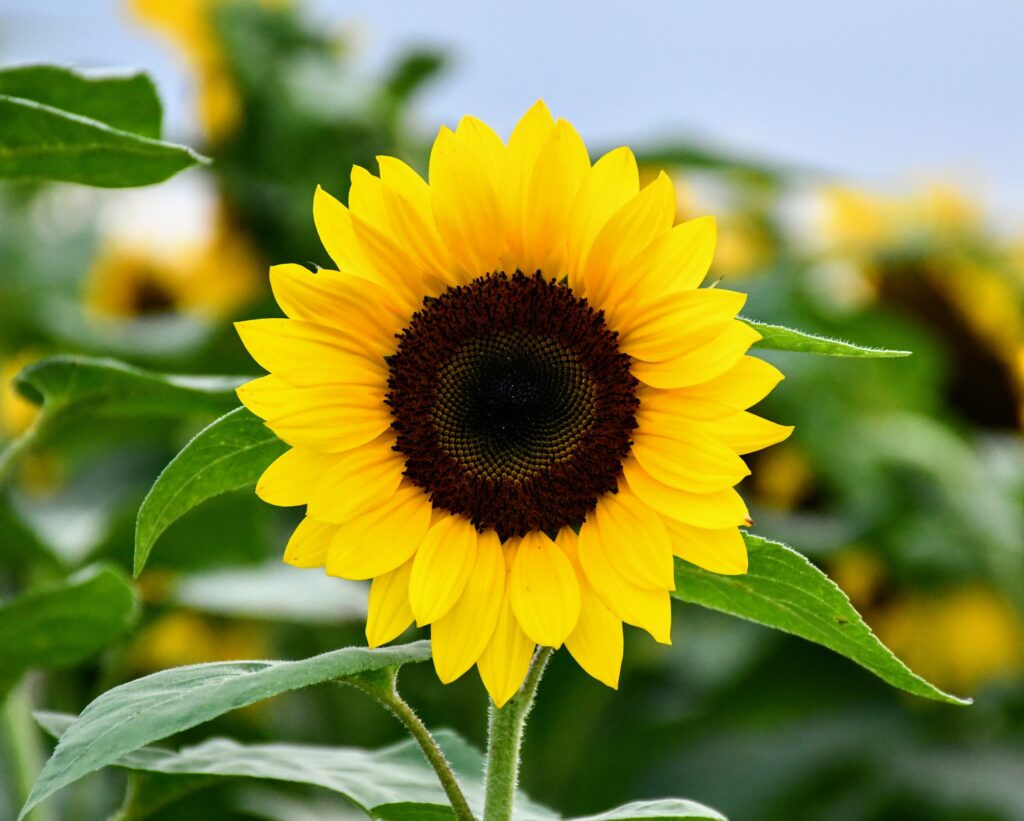
Sunny Smile is a miniature variety of sunflower with yellow petals and chocolate centers.
©Elizabeth Birckhead/Shutterstock.com
The Sunny Smile Sunflower is a gorgeous miniature variety of sunflowers. Use them as potted plants for patios and porches, even as indoor plants (if they can get enough direct light). The plant flowers year-round and doesn’t produce pollen, so it’s extra friendly for plant lovers with allergies.
Sunny Smiles grow up to 15 inches tall, with sturdy stems, and small yellow flowers with chocolate centers. For planting outdoors, sow the seeds after the last frost of the season, in a spot with full sun. For indoor plantings, sow them anytime, but spring is ideal for a more natural seasonal cycle for the flowers. Make sure they receive plenty of sunlight, though, or provide them with grow lights.
Junior Sunflower
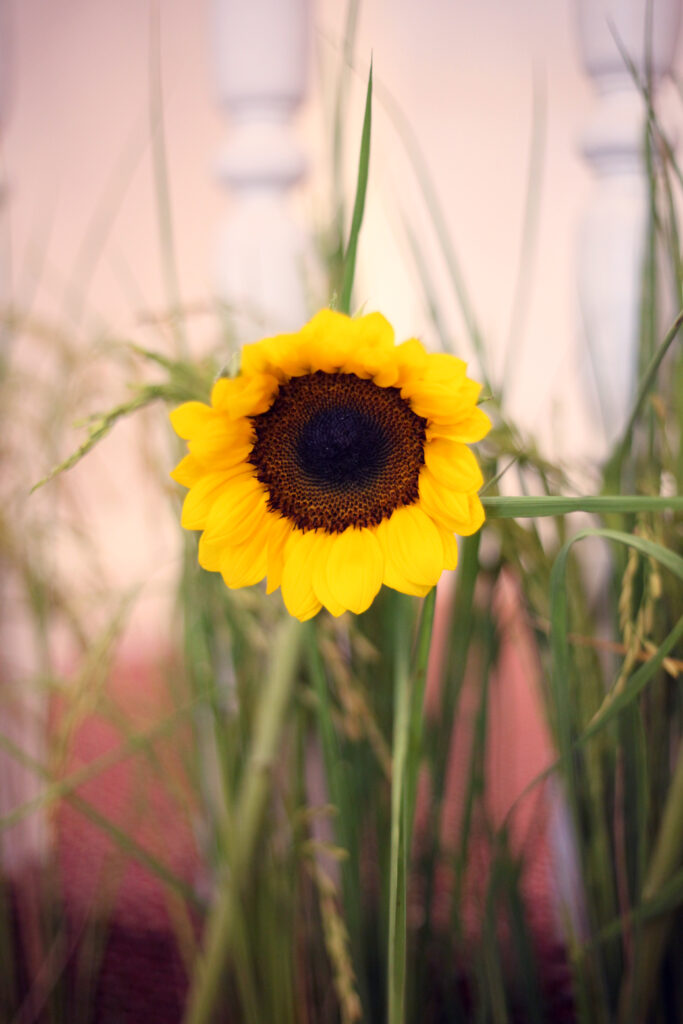
The Junior sunflower grows up to two feet in height with flowers that are five inches wide.
©Kulsumitra/Shutterstock.com
Junior Sunflowers are another miniature hybrid that doesn’t produce pollen. They reach up to two feet in height, with flowers up to five inches wide, making them on the larger side of dwarves. Sow them several weeks after the last frost has passed, in a spot with loads of direct light to enjoy their bright yellow blooms.
Dwarf Incredible
Dwarf Incredible Sunflowers are a unique variety of sunflowers. They have shorter stems, growing only to 2 feet in height, but still have huge flowerheads that may reach as wide as 18 inches across. Even though the flowers are huge, many folks still choose to grow these in container gardens or even indoors.
Plant the seeds of Dwarf Incredibles about 3 weeks before the last frost of the year for outdoor growing and any time for indoor (again, this is still best done in spring for a more natural life cycle for the plants).
Suntastic Yellow
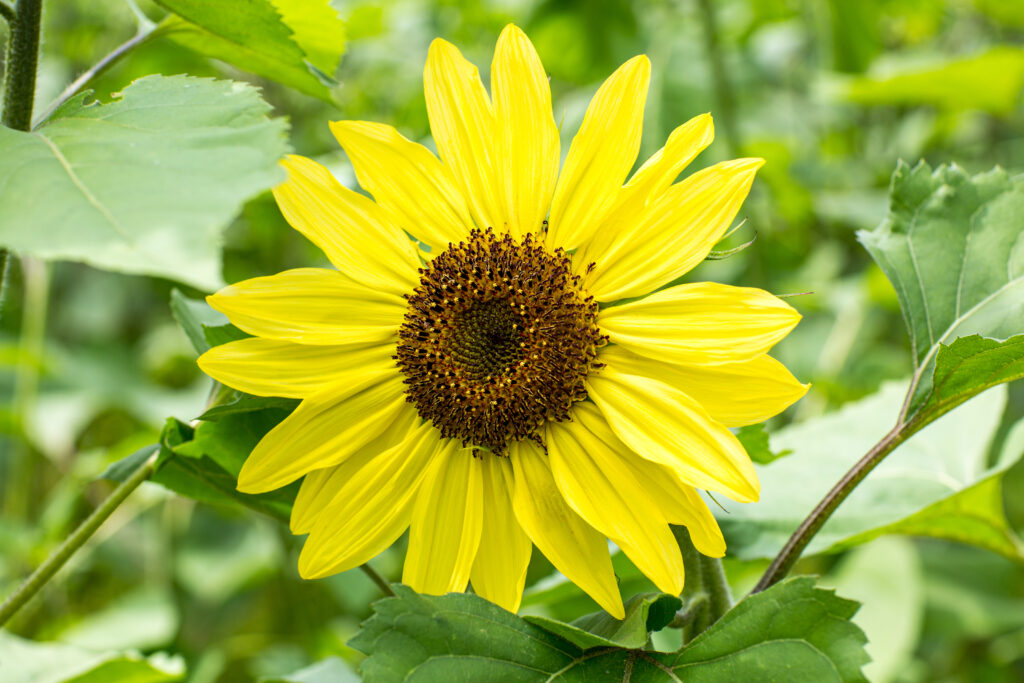
Suntastic Yellow is a sunflower that yields six-inch flowers in only a couple of months.
©Dee Carpenter Originals/Shutterstock.com
In less than 65 days of planting, your Suntastic Yellow sunflowers will produce plants up to 20 inches in height and flowers as wide as six inches across. The beautiful flowers are golden yellow with black centers and produces no pollen. The plant blooms up to 3 times each year, as well, with as many as 20 blooms per plant.
Plant your Suntastic Yellow Sunflowers in springtime, in moist, well-draining soil.
Big Smile
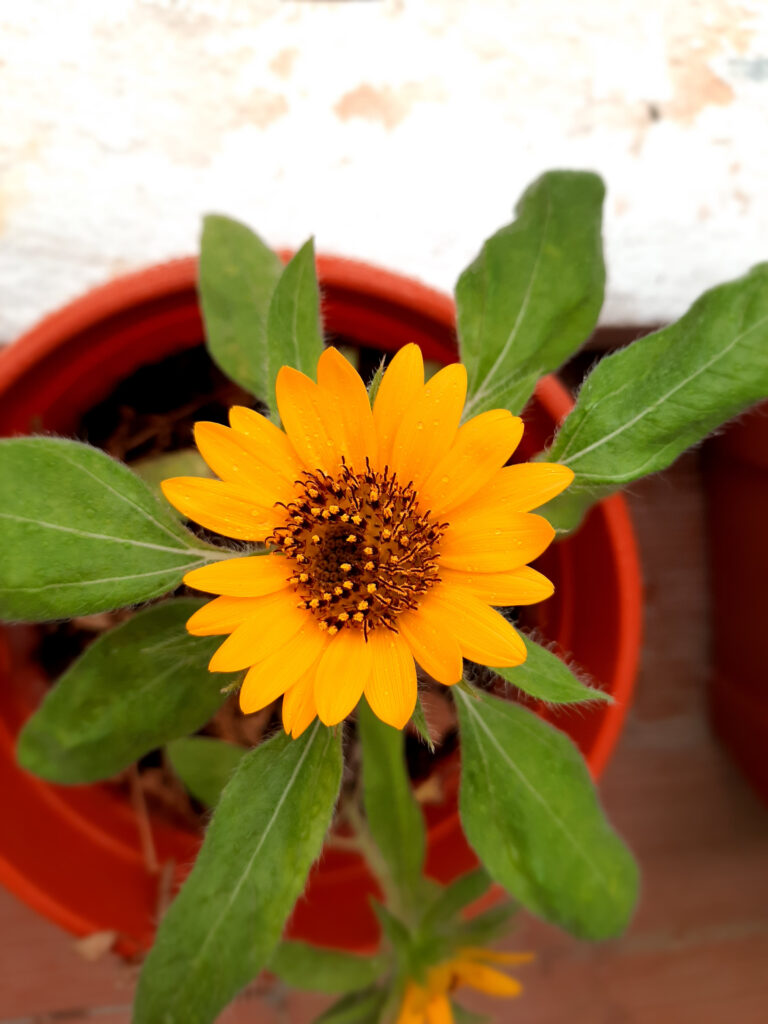
Big Smile is a sunflower with blooms three to six inches across.
©TheAmateurShot/Shutterstock.com
Growing up to two feet in height, Big Smile Sunflowers have yellow flowers with golden centers. The flowers are delicate and as wide as three to six inches across. Plant them in prepared seed beds after all dangers of frost have passed.
Ashy Sunflower (Helianthus mollis)
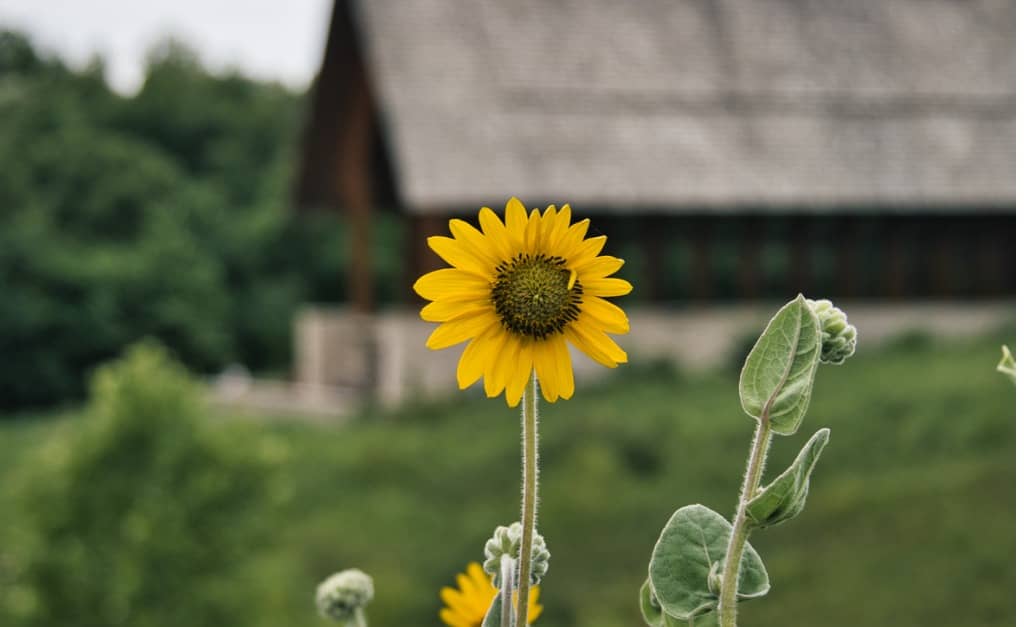
Ashy Sunflowers are perennials and thrive in gravelly and sandy soils.
©iStock.com/Matthew Fowler
The ashy sunflower blooms from July to September, providing goldfinches and similar birds with their favorite mealtime seeds all season long. The smaller sunflowers come back year after year, as long as they’re well-cared for, and planted where they do best: in sandy, gravelly soils. They should be planted between December and February for best results.
Branching Sunflower
Some of the varieties above are also branching flowers, but these particular varieties are known for their multi-blooming capabilities. These varieties are often used in flower beds and as borders, but rarely in pots because of their size.
They produce a main stem that then produces branches that each grow an individual flower, ultimately giving these varieties a longer growing period than most of the single-stem varieties. They also grow outward, instead of just upward, and generally take more space than single-stem varieties.
Rouge Royale Sunflower
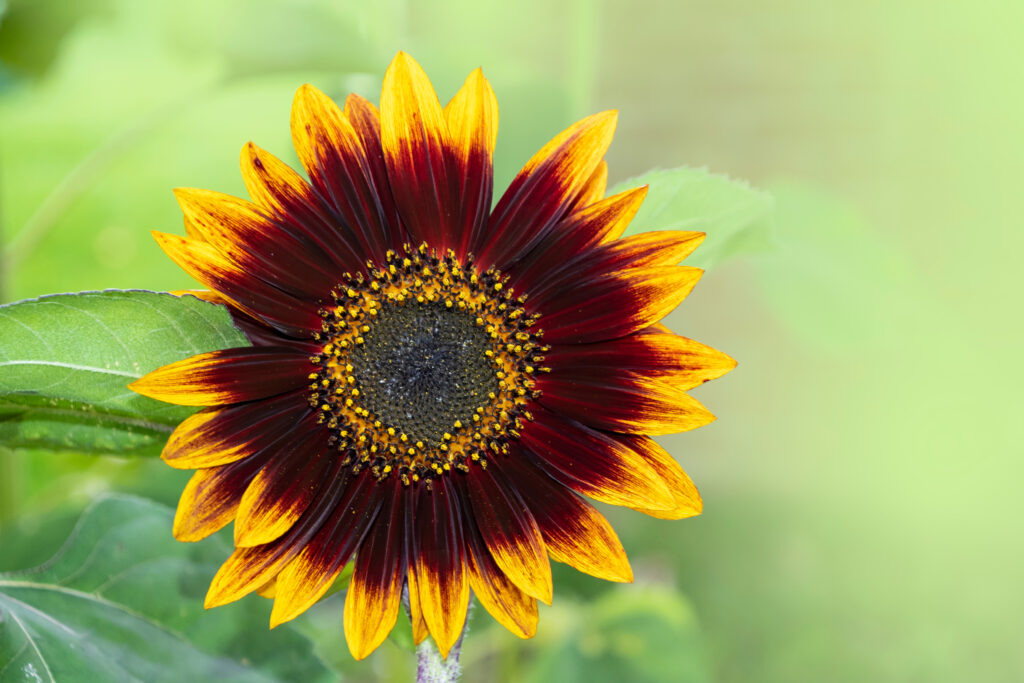
Rouge Royale sunflower (formerly known as Moulin Rouge) is a multi-branch variety known for exotic color.
©Brita Seifert/Shutterstock.com
Growing vivid, true red or burgundy red flowers, the Rouge Royale or Royal, Sunflower is a multi-branch sunflower variety that is popular ‘exotic’ sunflower with dark flower centers. The beautiful sunflower is favored as a cutting flower, garden bed plant, and has been named the “industry standard” for red sunflowers by many folks. They typically grow between four and eight feet tall.
Rouge Royales should be planted one or two weeks after the last expected frost of the year.
‘Italian White’
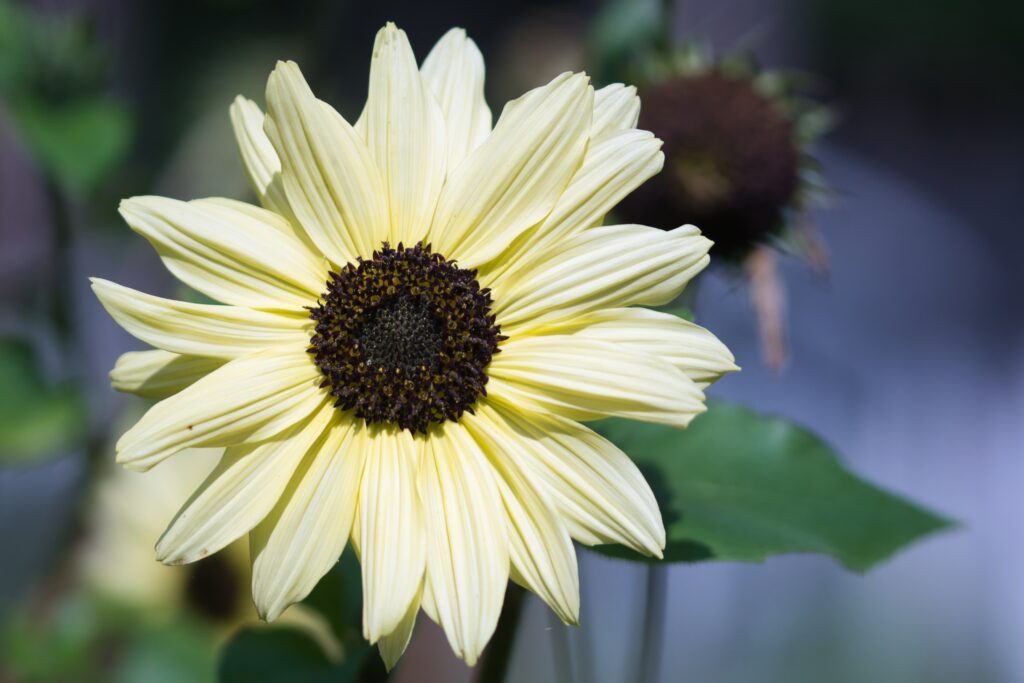
‘Italian White’ sunflower attracts pollinators so it works well in a bee garden.
©Ewa-Saks/Shutterstock.com
A larger variety of branching sunflower is the ‘Italian White.’ The plant grows to between five and seven feet in height, producing four-inch flowers on the multiple branches, with cream-colored petals with dark centers. They require full sun and should be planted in early spring. They’ll take 90 to 110 days or so to bloom, but once they do, loads of pollinators will come calling.
Soraya Sunflower
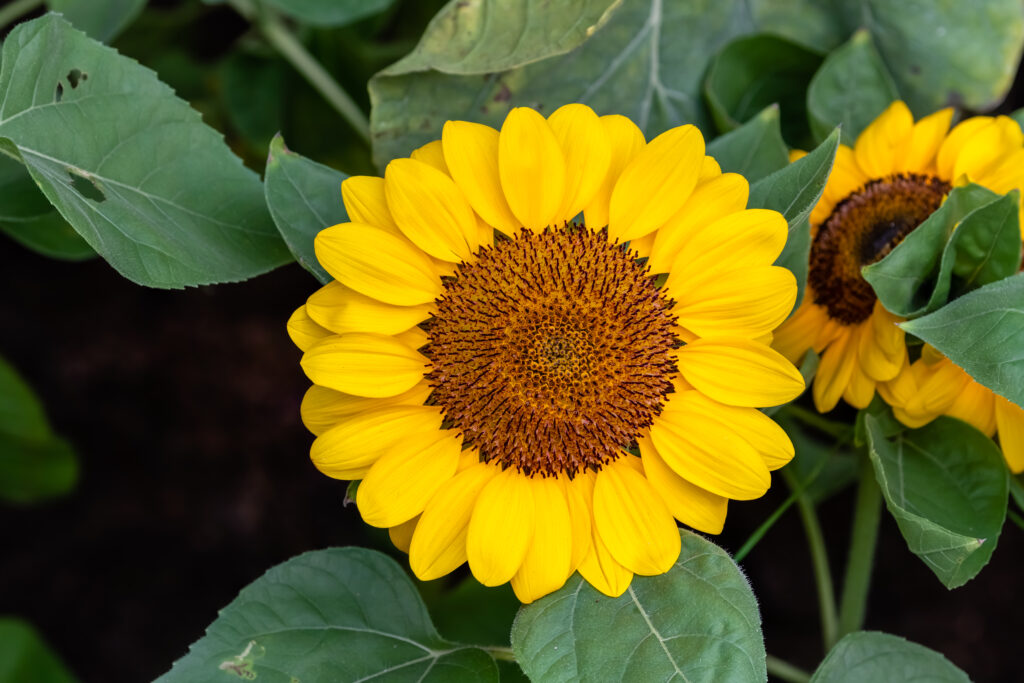
Soraya sunflower has award-winning orange petals and grows up to six feet tall.
©Teo Wei Keong/Shutterstock.com
The Soraya sunflower is a unique variety with bright orange petals and a dark center. It reaches up to 6 feet in height, making it a reasonable branching option for container gardens, if you have enough clearance around the pot. The unique variety is actually an award-winning variety, the first sunflower, in fact, to win the All American Selections Award (in 2000) for its distinctive orange color.
Plant Soraya sunflower in full sun for maximum size and beauty, in properly draining soil. Plant in the springtime, about 2 weeks after the last frost of the season.
Lemon Queen

Lemon Queen is an heirloom sunflower that can reach seven feet in height.
©Deborah Bush/Shutterstock.com
Pale, lemony yellow petals with a chocolate brown center help to make the heirloom sunflower, Lemon Queen, one of the favorites among flower gardeners. They’re fast-growing, tall, and produce yummy edible seeds while attracting pollinator birds and insects. Lemon Queen is also easy to grow and reaches between five and seven feet in height, typically. Folks recommend successive plantings every one to two weeks for the most robust seed and (edible) bud harvesting each year. The plants mature in about 100 days after planting and produces one large bloom (normally) on the center stalk and smaller blooms on the branching stalks. The plant will continue flowering until frost.
Direct sow the seeds in spring after the last frost has passed or start indoors a few weeks beforehand. Plant Lemon Queen in full sun, with rich soil and moderate moisture.
Topolino Sunflower
The Topolino Sunflower is both a dwarf and branching sunflower variety, producing yellow blooms on stems that reach 16 inches in height. Each plant, when healthy, produces multiple flowers, and is hardy in either flower beds or containers. The plant reaches about 2 feet in height, maximum, with medium-sized blooms.
Plant seeds between March and May for best results and ensure the plants are directly sown in locations with full sun.
Florist Sunflowers
There are special varieties that are favored among florists, typically in the single stem varieties and mostly commonly producing no pollen. They are typically in the mid-height varieties, growing up to 6 feet tall.
ProCut Sunflowers
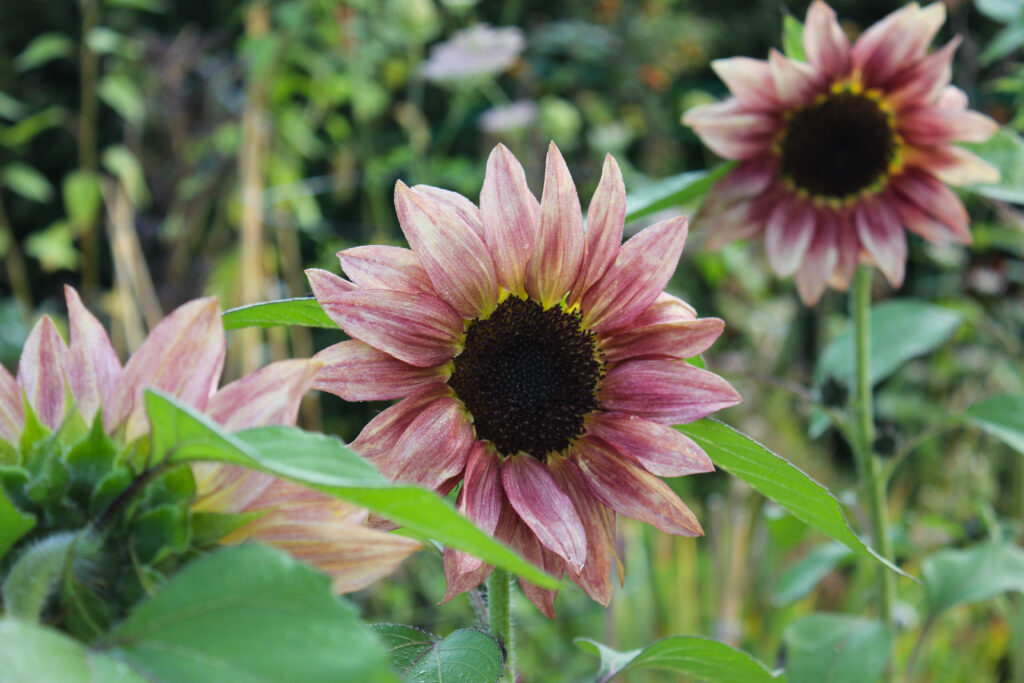
Rare and unique, the ProCut Plum sunflower comes in more of a purplish-pink than red.
©Stecher/Shutterstock.com
There are a few ProCut Sunflowers, which, as the name implies, are hybridized specifically for use as cutting flowers. ProCut Sunflowers may come in yellow to deep red, or bi-color varieties. They are pollen-less and easy to grow with basic care.
ProCut Bicolor
One of the most popular of florist varieties of sunflowers is the ProCut Bicolor, which is a series of pollen-less hybrids that are intended specifically for cutting gardens and commercial florist providers. They grow quickly, usually producing 50 to 65 days from planting, making them excellent for many purposes, including life in a short growing season. Their flowerheads are 3 to 4 inches across and come in sunset shades. They grow to 4 to 6 feet in height before blooming and often require staking.
These should be planted in spring soon after the frosts have passed, but because they’re fast growing, they’re one of the best choices for late plantings in mid to late spring.
ProCut Peach
Another ProCut variety of cutting sunflower, ProCut Peach is a single-stem, pollen less bloom with peach petals and dark centers. They grow between 4 and 6 feet in height and thrive in full sun. They’re also fast-growing and should be planted in spring.
‘Choco Sun’
Another beautiful favorite among florists for its vibrant coloring, the Choco Sun variety has vivid yellow petals and a chocolate brown center. After only 11 weeks, the plant reaches full maturity and produces vibrant flowers. They’re shorter, too, growing only 10 to 12 inches in height.
They should be planted in springtime in a location with full sun.
Taiyo Sunflower
Taiyo Sunflowers are a special type of Japanese sunflowers that come in a range of colors. They typically have dark orange or mahogany brown centers. The petals may be yellow, orange, sable, or chocolate brown. They are an heirloom variety that takes between 12 and 14 weeks to bloom from sowing date and they attract pollinators like crazy. They aren’t technically florist flowers, but they are hugely popular among home-growing sunflowers for cutting gardens because of their rich shades.
Plant these beauties in early spring after the last threat of frost, or start them indoors 2 to 3 weeks earlier. They need full sun, moderate soil moisture and rich soil content.
‘Early Black Heart’
With an extremely fast maturation time of just 55 days from sowing, Early Black Heart Sunflowers deserve their name. They produce vivid golden yellow petals with black centers (hearts) and are pollen-free. The variety was released in 2017, so it’s still a newer type of sunflower, but the seeds are fairly widely available. They grow to between 5 and 6 feet in height and require full sun.
Plant Early Black Heart Sunflowers directly into the garden or containers after the last frost has passed. Plant them 6 inches apart, about 1 inch deep in a shallow trench.
Bashful

Bashful sunflower has a unique coloring of pale yellow or salmon.
©Nature Nut/Shutterstock.com
Also pollen-free, Bashful Sunflowers have a unique coloring of pale, pastel yellow, or salmon. The plants hit 3 feet in height, on average, and the petals themselves are about 4 inches long. Plant the inviting flowers in early spring, after the last frost has passed, in full sun.
The photo featured at the top of this post is © Aldo_Parrotta/Shutterstock.com
Thank you for reading! Have some feedback for us? Contact the AZ Animals editorial team.






